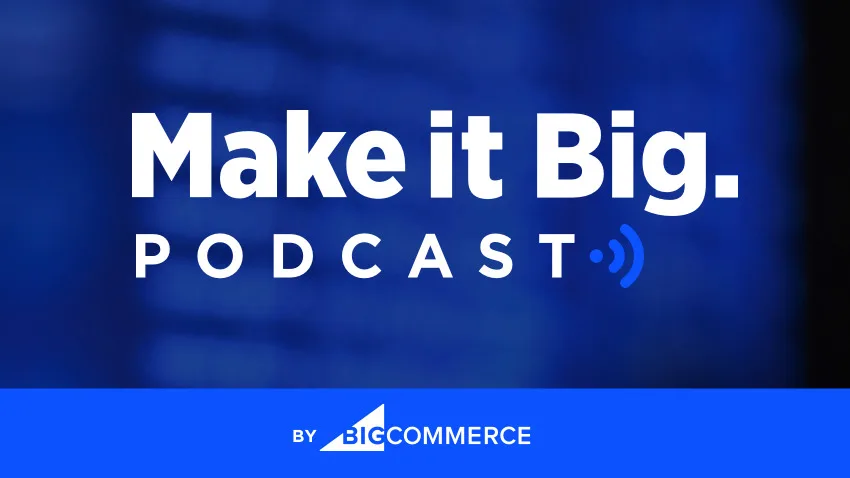
Ecommerce insights on the go
Tune in to the Make it Big Podcast — our thought leadership audio series for retailers, entrepreneurs and ecommerce professionals. You'll get expert insights, strategies and tactics to help grow your business.

Subscription Ecommerce Websites Saw 4,461% Revenue Boom in 5 Years: 20 Brands Reaping the Benefits
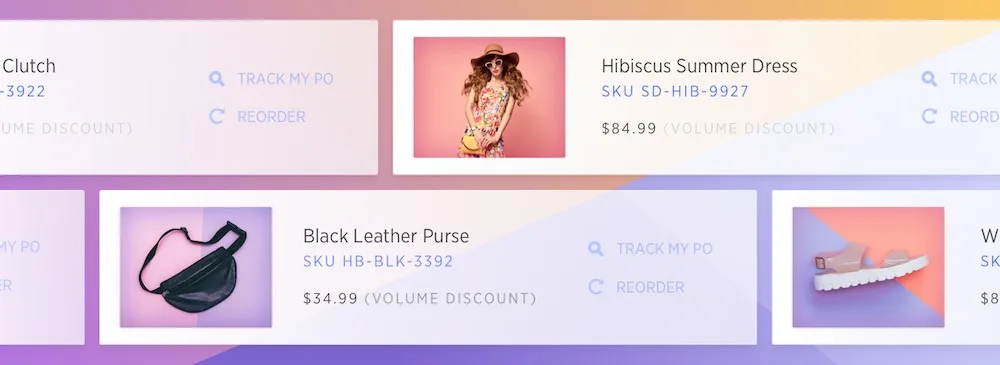
Don’t even say it out loud:
Subscription boxes are not dead.
Heralded as the newest, greatest ecommerce strategy beginning around 2010, subscription box services like BirchBox, Trunk Club and Dollar Shave Club have not only made headlines – they’ve made billions.
In 2011, subscription brands made an estimated $57,000,000. In 2016, that revenue jumped to $2.6 billion – a 4,461% increase.
Even Amazon is in on the game (of course).
In fact, Amazon’s Subscribe and Save subscription service is the most used subscription service in the world, according to a McKinsey study.
Here’s a quick overview of the most popular services men and women subscribe to.
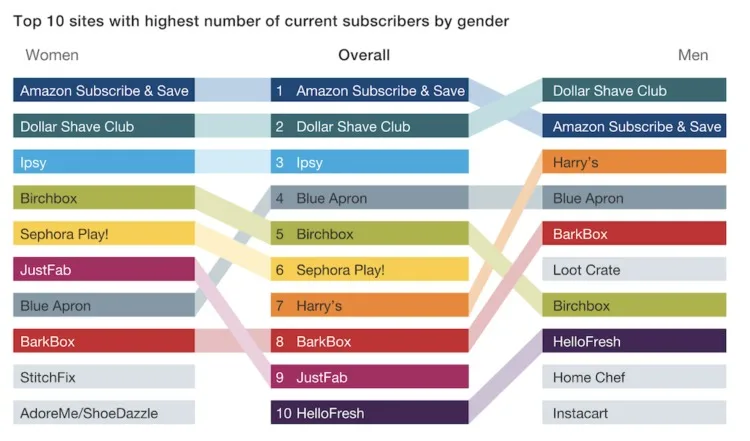
And while the most popular subscription sites above are focused almost exclusively on membership and subscription services, know this:
You don’t have to focus exclusively on subscriptions to make subscription ecommerce a profitable, predictable revenue driver.
In this post, we’ll look at the data available to help you determine:
If a subscription service will work for your target customers (i.e. do they care?)
The various types of subscription services (and if your business model currently fits)
The right subscription ecommerce model for your products and what to expect (i.e. churn!)
We’ll also look at 20 example of subscription ecommerce services across multiple verticals including:
Food & Beverage (the fastest growing subscription service vertical)
Health & Beauty
Fanatic (Niche segments, sports fans, etc.)
Miscellaneous (gifts, crickets and other off the wall boxes you can send)
B2B subscription ecommerce
Let’s dive in.
What is a Subscription Website?
A subscription website is a site that collects a recurring payment from customers in exchange for recurring product replenishment or on-going service.
Most popular subscription websites:
Arbor Teas.
NBA Thunder Shop.
Atkins.
New Chapter.
Fresh Fronks.
Spinning.com.
NuSocks.
Fine Taste Club.
Beer Cartel.
Hawaii Coffee Company.
Marquis Wine Club.
Babeths Feast.
Invader Coffee.
Give Black Box.
Flucker Farms.
Lexli.
Savor Beauty.
Nutragen.
Enertion Boards.
Subscription Ecommerce By The Numbers
According to a study by McKinsey in February 2018, subscription ecommerce services are popular among young, wealthier populations.
They are more likely to be ages 25 – 44, have incomes from $50-100K, and live in urban environments in the Northeast.
Gender plays a big role here.
In total:
15% of Online Shoppers Have Subscribed to An E-Commerce Service in the Past Year
60% of subscribers are women…
But men subscribe to more boxes (3 versus an average of 2 for women)
18% of male subscribers claim to be subscribed to at least 6 e-commerce services, compared to just 7% of female subscribers.
58% of ecommerce service subscribers have multiple active subscriptions.
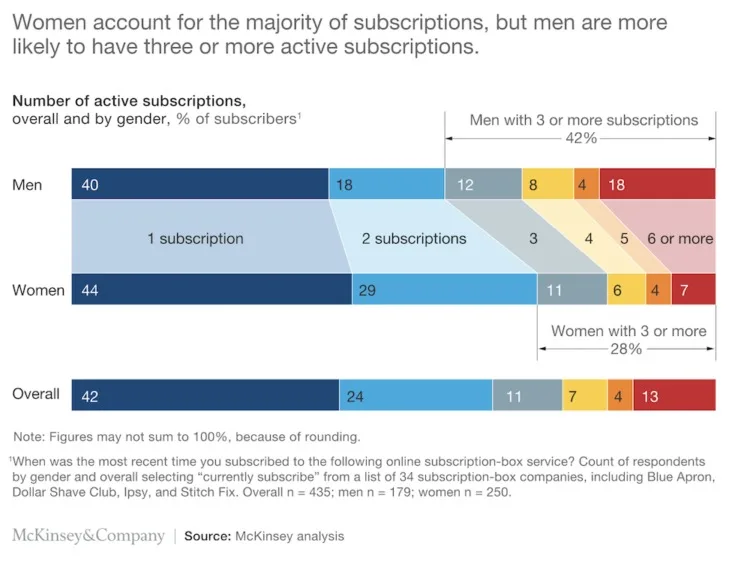
If I were a betting writer, I’d say based on the data, if you’re target market is younger than 40 and primarily in the Northeast or other larger cities – a subscription service would serve you well.
But, there’s more to consider here.
Let’s move on.
3 Types of Subscription Ecommerce
In general, there are 3 types of subscription ecommerce services:
Replenishment: 32% of consumer subscribe for replenishment.
Curation: 55% of consumers subscribe for curation.
Access: 13% of consumers subscribe for access.
Here’s the value proposition for each.
[ultimatetables 49 /]
Curation services are the most popular, providing aspects of both the replenishment and the access models.
However, food & beverage brands are continuing to break into both the curation and the replenishment sectors.
For those in the replenishment sector, fresh weekly delivery of new food items is becoming increasingly popular.
Subscription Ecommerce Factors for Acquisition & Retention
For subscription websites to gain new customers and continue to grow their subscription base, it is key that you nail 3 things:
Cost.
Convenience.
Customer experience.
This is because subscription customers subscribe to new boxes for the following reasons:
Wanting to try something new (25%) was the top response for curation subscriptions in the McKinsey study.
A financial incentive (24%) was cited most often for replenishment subscriptions.
A recommendation (24%) was the most-cited reason for access subscriptions.
Let’s look at each of your options here.
1. Subscription website cost.
This is important for all 3 types of subscribers:
Replenishment.
Curation.
Access.
According to the McKinsey report:
Many of the most popular services (including Birchbox, Dollar Shave Club, and Ipsy) charge relative low monthly fees of $10 or less.
Others, such as Blue Apron and Stitch Fix, have higher fee structures and can therefore generate higher revenues on a smaller customer base; for example, Blue Apron’s average order value was $58 and its average revenue per customer was $245 in the third quarter of 2017.
As you consider whether or not to launch a subscription ecommerce channel, think through if you can afford to low costs to $10 or less, or if you’ll need to follow a pricing structure in order to make margins work out.
Remember: the lower the subscription price, the higher the customer volume. The higher the subscription price, the lower the customer volume.
Key points to consider about subscription ecommerce price:
Cost of your subscription plays in to your overall average revenue per customer –– and will affect how much you can spend in order to acquire those customers.
Your existing margins will help to dictate your possible price points.
Think about reduced shipping costs using compact boxes with multiple items in predictable sizes and with predictable and relatively stable volumes.
2. Subscription website convenience.
This is most important for the following types of subscribers:
Replenishment.
Access.
A reduced hassle of choice and immediate access to needed or desired items drive adoption for these two types of subscription programs.
Key points to consider about subscription ecommerce convenience:
Advertise subscription options on your product page as well as on a specific landing page.
Explain how the process works, and what customers get. This should include price discounts for loyalty overtime in addition to the product itself.
3. Subscription personalization overtime.
All subscription box consumers stated that personalization overtime was very important for continuing to use a specific subscription website or channel.
However, it is most important for subscribers subscribing for:
Curation.
Access.
This aspect is a huge factor in continued subscription for consumers.
If consumers perceive they are not getting their desired value, which can counteracted with increased personalization, they will churn (at about 40%).
Key points to consider about subscription ecommerce personalization:
Use personalized email segmentation to follow up with consumers after items are delivered to understand their experience and perception of the box. Take that feedback seriously, and update all boxes moving forward to better fit the needs of the segments you are building out. Email segmentation tools like Klaviyo are important here.
Begin small, and do what doesn’t scale. Include personalized notes. Ask for feedback. Get specific messages in the box and convey the purpose behind each one. Give folks a clear vision of the value.
20 Examples of Ecommerce Subscription Websites
Let’s take a closer look at ecommerce sites using full subscription models or add-on subscription models to drive increased revenue.
There are 5 top categories subscription ecommerce works for. The final category is a catch-all. If you don’t fit in the top three, there is a possibility for you yet.
Top subscription ecommerce verticals:
Food & Beverage (the fastest growing subscription service vertical)
Health & Beauty
Fanatic (Niche segments, sports fans, etc.)
Miscellaneous (gifts, crickets and other off the wall boxes you can send)
B2B subscription ecommerce
Food & Beverage Subscription Websites
1. Fine Taste Club
A perfectly curated, surprise and delight box from Fine Taste Club.
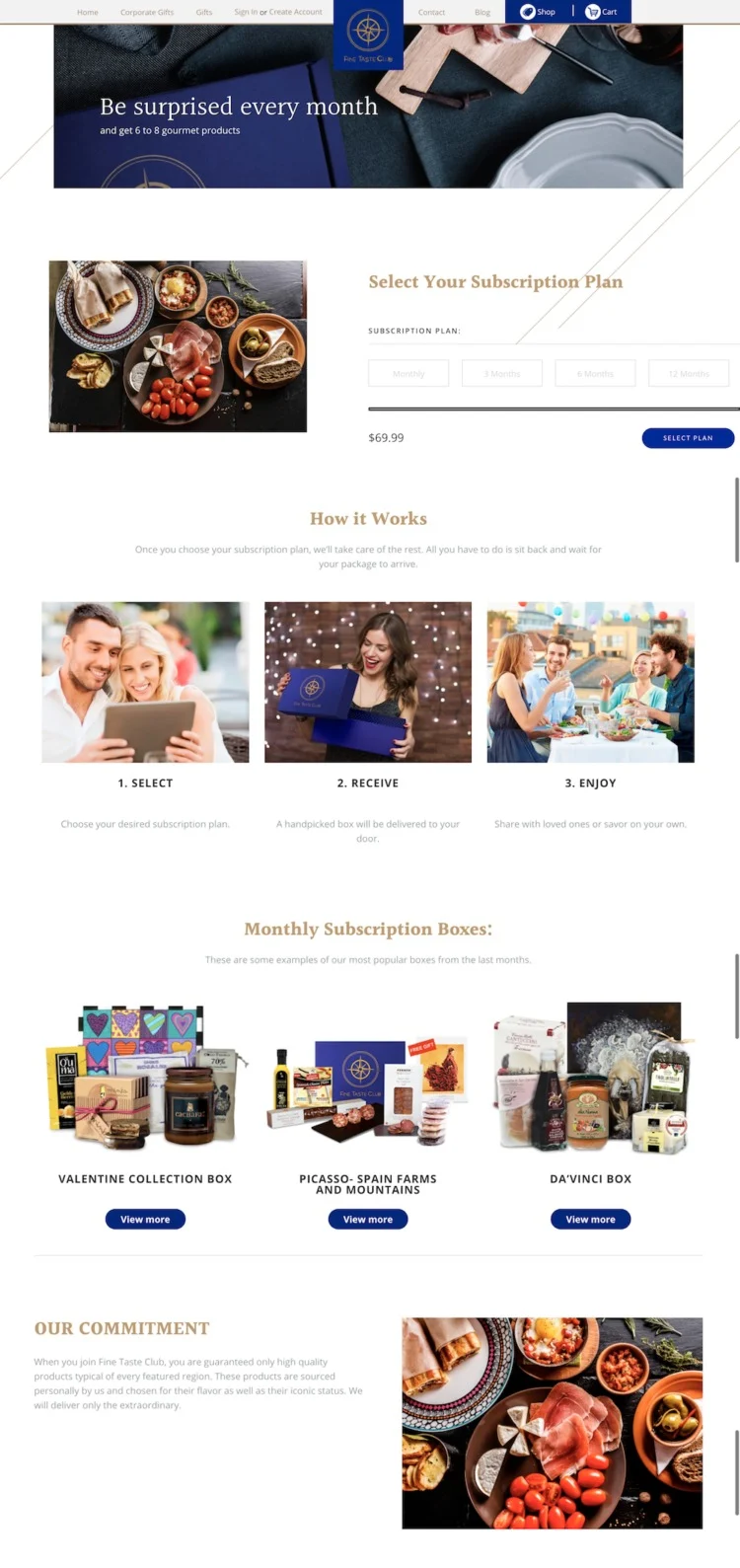
2. Fresh Fronks
Fresh Fronks deliveries weekly or bi-weekly fresh almond mil products to customers’ doors.
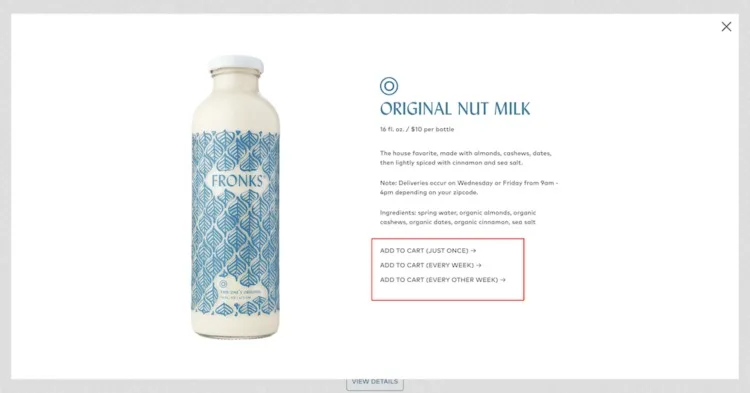
3. Atkins
Atkins sells refillable meal kits to help their customers reach their goals.
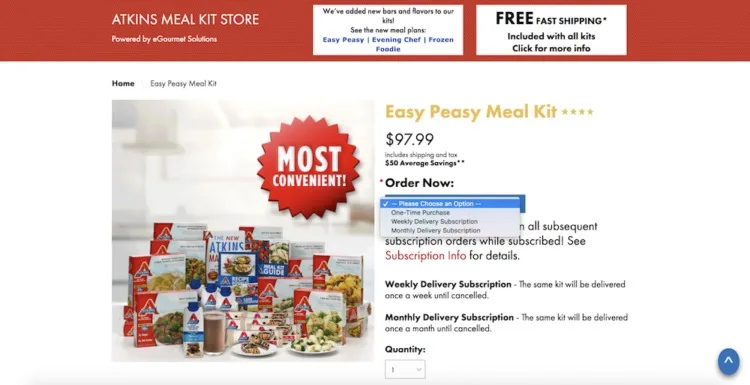
4. Beer Cartel
The Beer Cartel offers a variety of recurring billing and subscription packs, based on your beer drinking needs.
This is a perfect example of curation subscription.
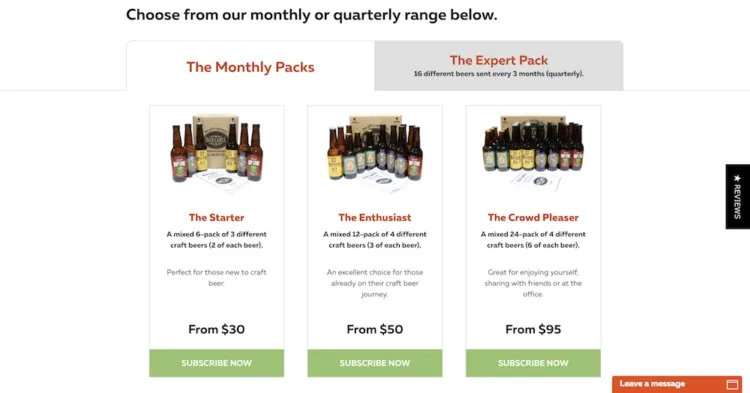
5. ArborTeas
ArborTeas offers subscription refills for certain items –– and uses an FAQ page to help answer any questions about the program.
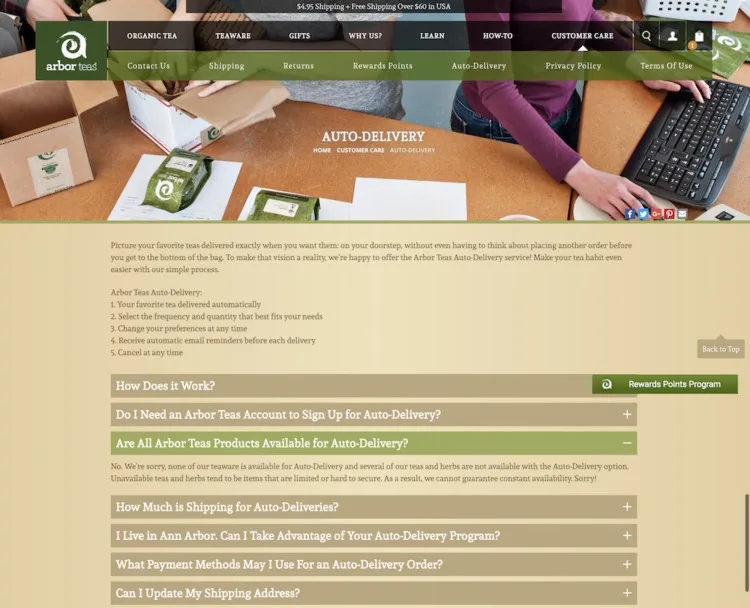
6. Marquis Wine Club
Monthly wine delivery –– a perfect blend of replenishment, curation and access.
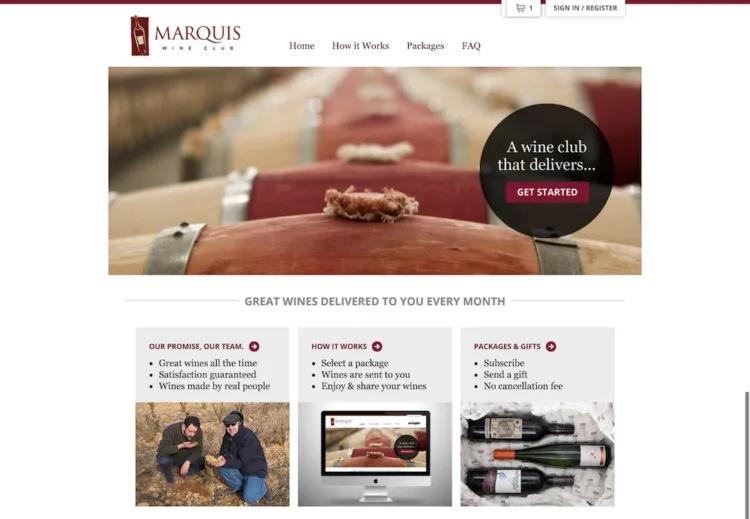
7. Hawaii Coffee Company
Personalized coffee replinishment delivery.
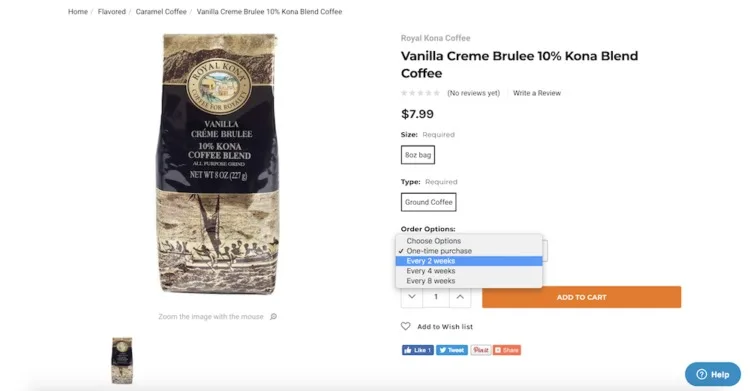
8. Invader Coffee
Take coffee subscription services to the level level with clearly defined benefits, savings and convenience.
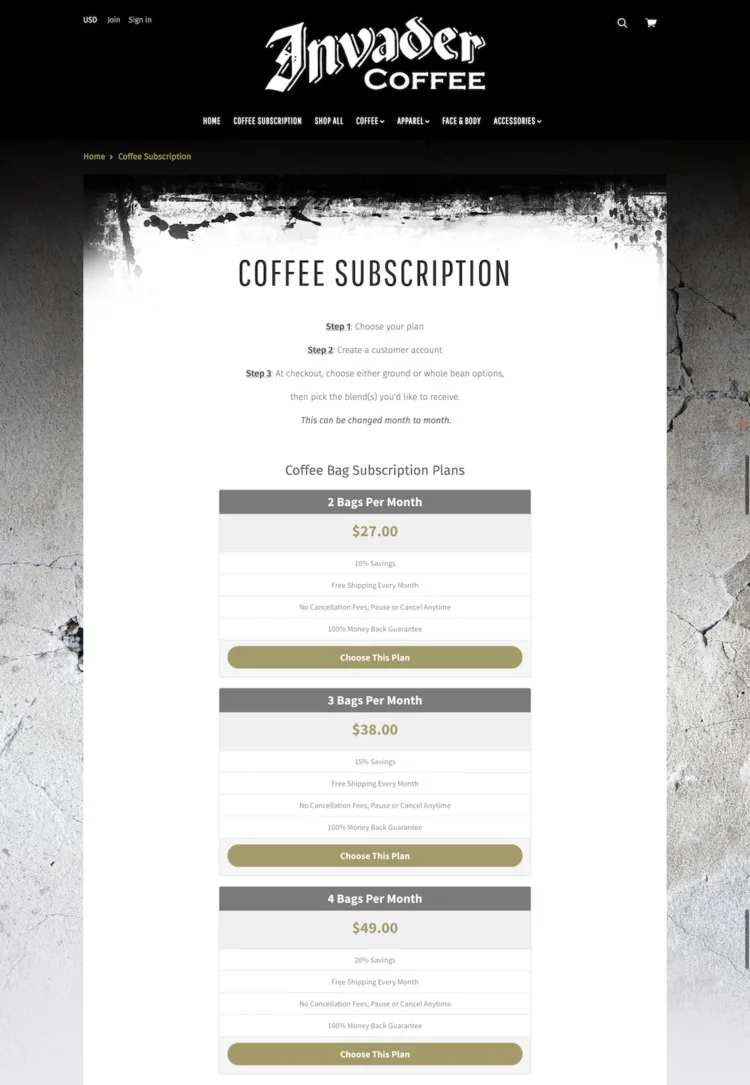
9. Babeths Feast
A great blend of replinishment, curation and access, this subscription box allows you to customize your order, your delivery and save money and time.
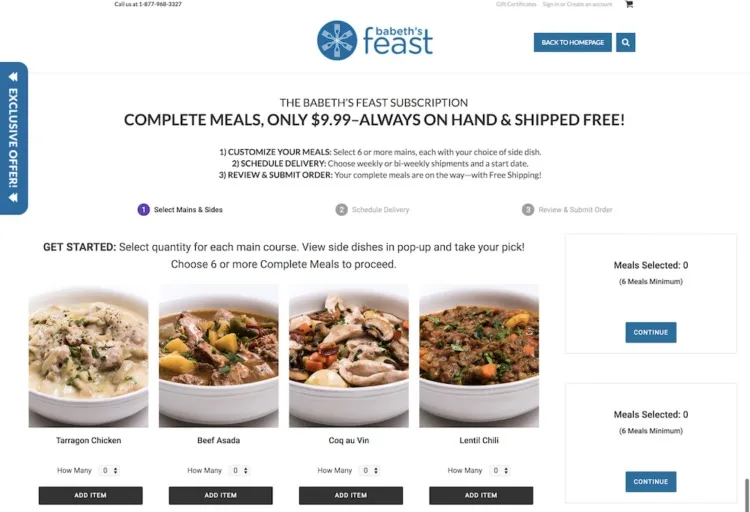
Health & Beauty Subscription Websites
1. Spinning.com
This is access subscription ecommerce at its finest, including a clearly defined landing page with details on exactly what the program gets you.

2. Lexli
This is a replenishment subscription program for beauty items – hitting on the convenience factor for products you like, but use often and therefore run out of often.

3. Savor Beauty
This is a choose your own adventure subscription box, where you can opt in for replinishment or curation choices.
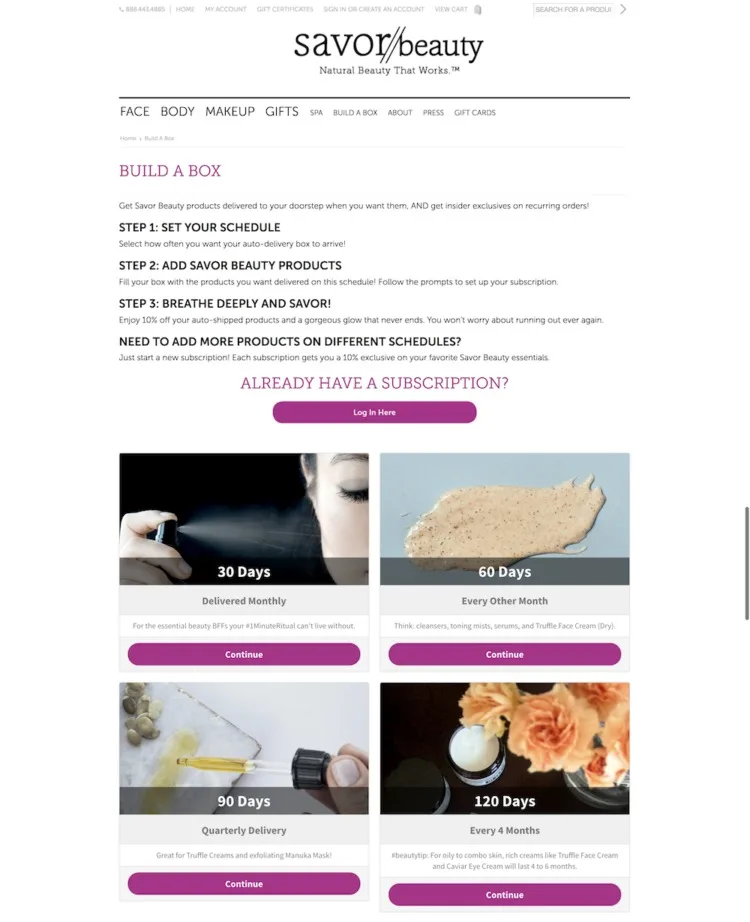
4. New Chapter
New Chapter takes things one step further with a subscribe CTA and a call-out to the savings you’ll have for the subscription over the one-time purchase.
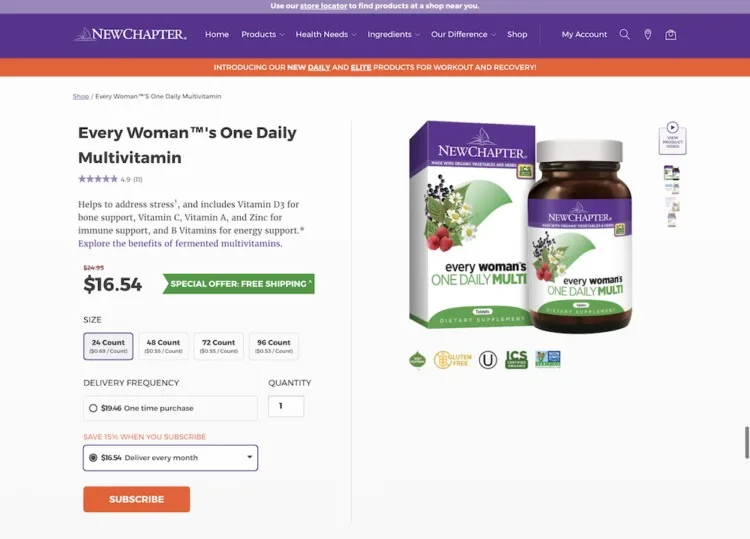
5. NutraGen
A simple replenishment subscription program.
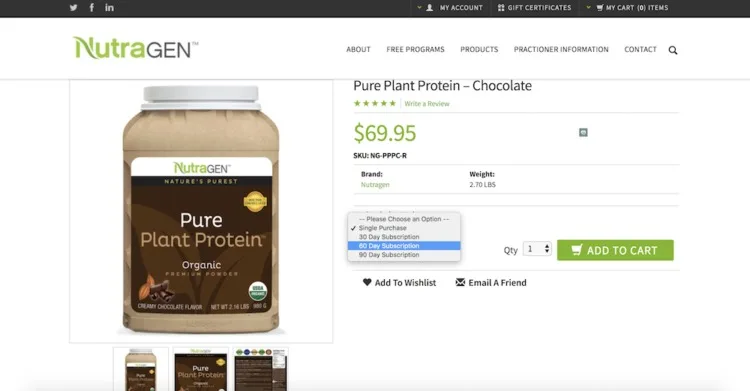
Fanatic Subscription Websites
1. NBA Thunder Shop
NBA Thunder is filling the closets of all their most loyal fans with a monthly tee club that is the definition of curation and access.
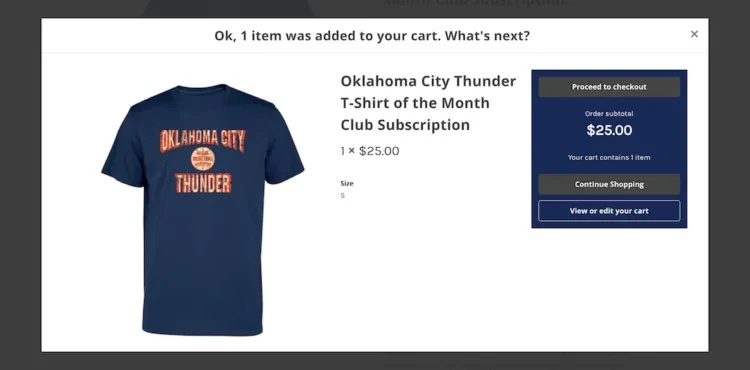
2. NuSocks
A curation box for high-quality, fancy socks.
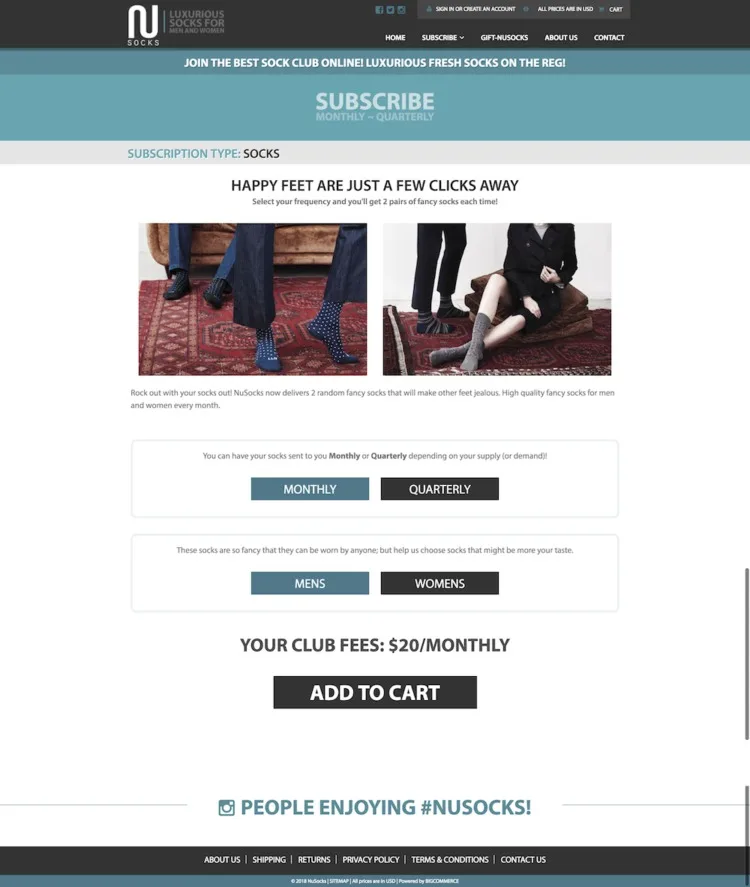
Miscellaneous Subscription Websites
1. Give Black Boxx
Curation and access combine here for ultimate surprise and delight and value.

2. Flucker Farms
I’ll leave you to your own conclusions on the value (and the high ratings!) for this product – but it is replenishment that keeps customers coming back.

B2B Subscription Ecommerce
1. Enertion Boards
Make it easy for your partners to sell to your goods.
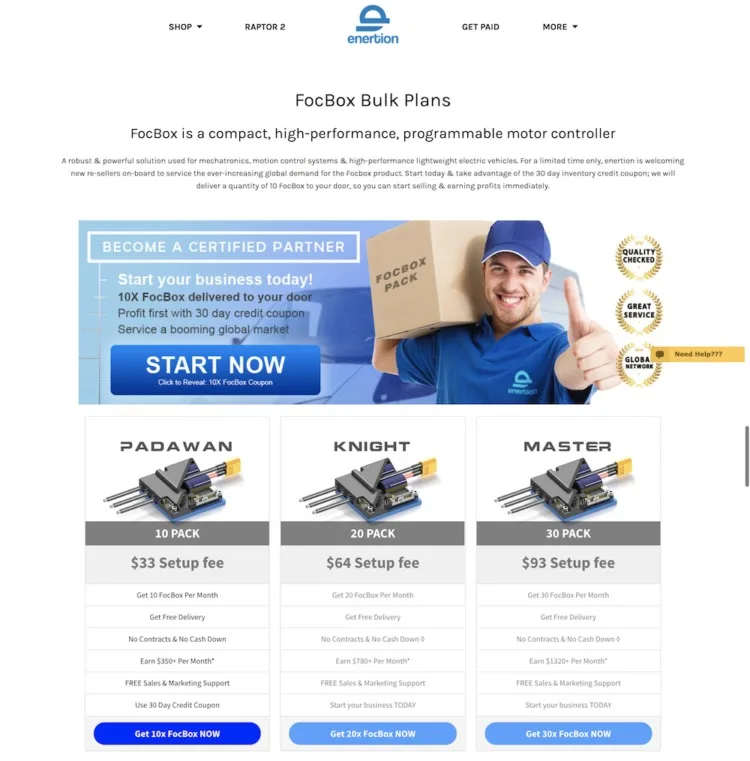
2. Vypin
B2B recurring orders for customers on-the-go.

Ecommerce Recurring Payments Tools
Functionally, in order to make subscription ecommerce work, you need a recurring payments tool.
There are plenty out on the market – but ensuring yours enable checkout on your domain (not all do) and is PCI compliant is important.
Here are 3 of the most popular tools:
Rebillia’s subscription service is a game changer for those of us who need to keep up with the likes of Amazon. Offering a subscription service to our offering has not only delighted our customers but has helped us manage our business more effectively. You wont be disappointed!
– Jeff Stripp, Zogics

We needed a solution to allow our customers to conveniently re-order supplies for their gardens with as little hassle as possible, and MINIBC’s app provided an AUTOMATED solution that did that and more!
Not only are we getting the re-order functionality but we’re also getting vault which is something our customers have been asking us for a long time now. We’re always trying to stay ahead of the game, so when we went looking for a solution we were really excited to have found MINIBC.
– Arny Pollack, Director of Operations, Hydro Empire.

What Makes a Good Ecommerce Subscription Platform?
Here’s a quick ecommerce subscription platform checklist.
A good ecommerce subscription platform will:
Be PCI compliant.
Allow you take orders easily.
Be optimized for conversion.
Not send customers to a new URL for recurring order checkout.
Allow for on-site recurring orders (rather than a new site where you’d lose SEO value and engagement).
Be customizable, for both you and your end customers to maintain that personalized experience necessary to reduce churn.
Be sure you ask all of the above questions to any solution provider you are considering working with.
Executive Summary
Remember: ecommerce subscription churn is 40% and most folks only subscribe to 2-6 boxes (women less and men more).
Be sure your box fulfills a primary subscription website needs, either offering replenishment, curation or access to consumers.
Overall:
If you sell to folks unders 40 primarily in the Northeast, you are ripe for a subscription service.
If you have a loyal base with high customer lifetime loyalty and recurring orders, a subscription service makes sense, and generates convenience for your customers (and more predictable revenue for you).

Tracey is the Director of Marketing at MarketerHire, the marketplace for fast-growth B2B and DTC brands looking for high-quality, pre-vetted freelance marketing talent. She is also the founder of Doris Sleep and was previously the Head of Marketing at Eterneva, both fast-growth DTC brands marketplaces like MarketerHire aim to help. Before that, she was the Global Editor-in-Chief at BigCommerce, where she launched the company’s first online conference (pre-pandemic, nonetheless!), wrote books on How to Sell on Amazon, and worked closely with both ecommerce entrepreneurs and executives at Fortune 1,000 companies to help them scale strategically and profitably. She is a fifth generation Texan, the granddaughter of a depression-era baby turned WWII fighter jet pilot turned self-made millionaire, and wifed up to the truest of heroes, a pediatric trauma nurse, who keeps any of Tracey’s own complaints about business, marketing, or just a seemingly lousy day in perspective.


